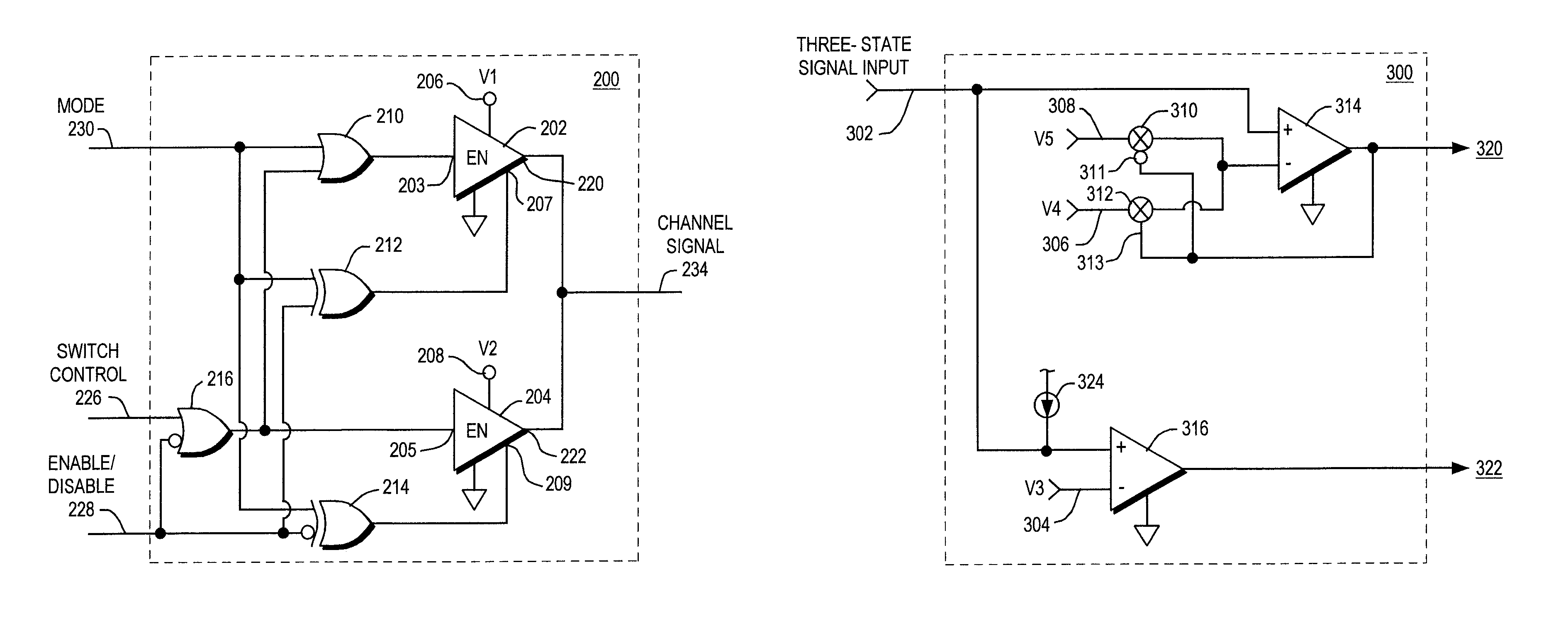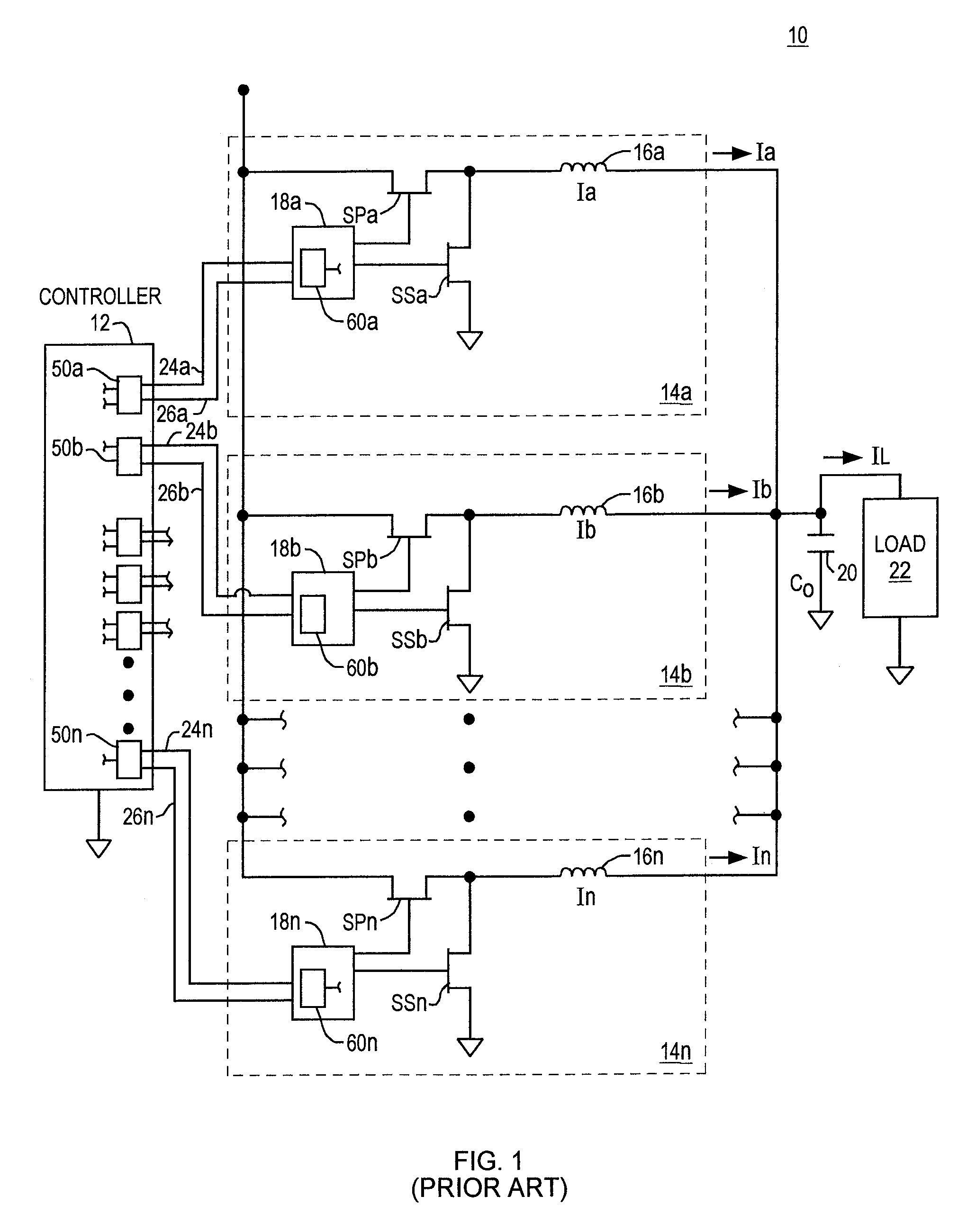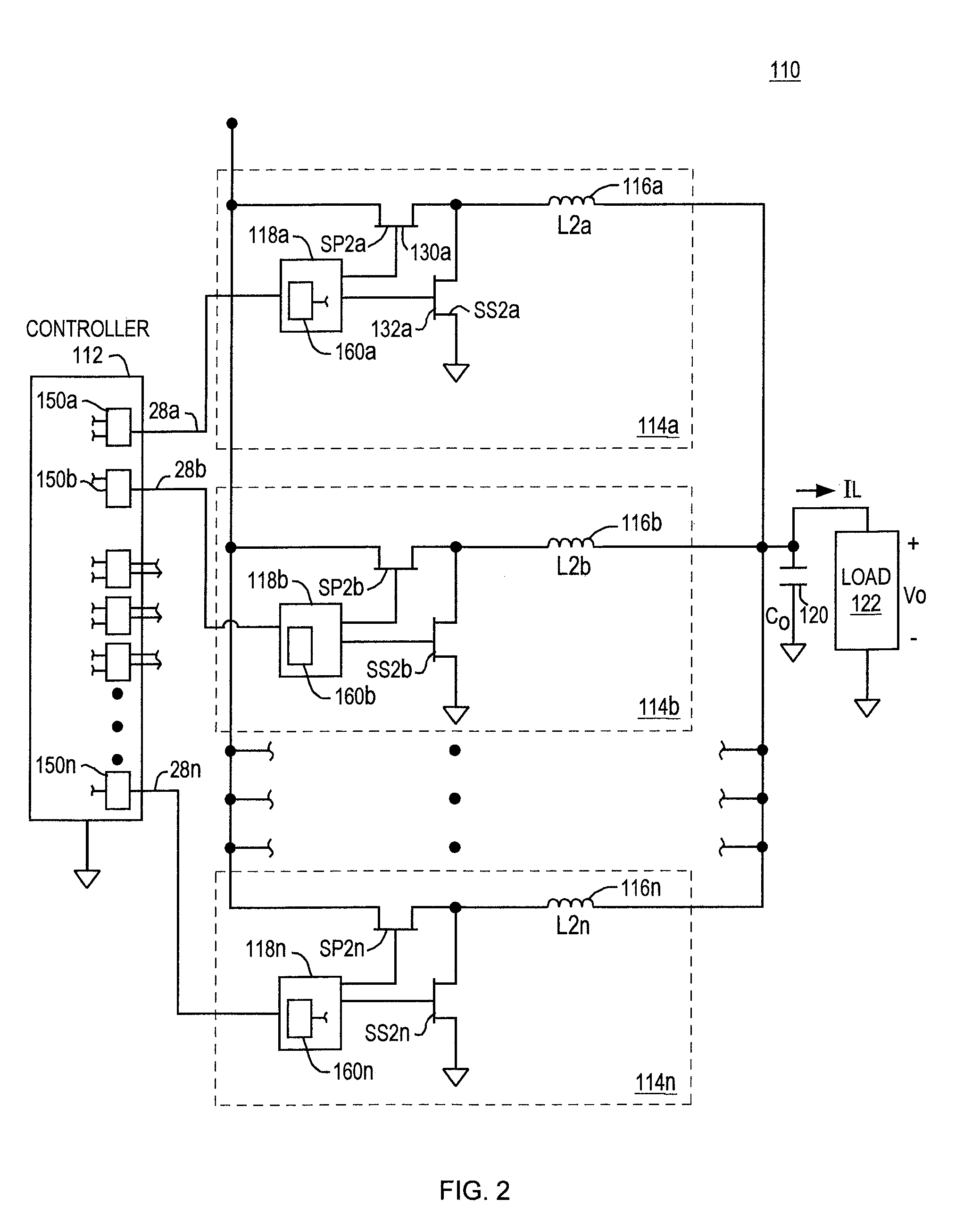Multi-level signaling
a signaling and multi-level technology, applied in the direction of pulse technique, process and machine control, instruments, etc., can solve the problems of overlapping of the switching phase between the controller and the driver circuit, and the allocation of a pair of pins, so as to minimize or prevent the overlap of the switching phas
- Summary
- Abstract
- Description
- Claims
- Application Information
AI Technical Summary
Benefits of technology
Problems solved by technology
Method used
Image
Examples
Embodiment Construction
[0035]FIG. 1 shows a simplified schematic diagram of a prior art multiphase power converter 10 according to conventional methods. In the figure a digital controller 12 sends a pair of channels (e.g., channel pairs 24a, 26a; 24b, 26b; 24n, 26n) to each of a plurality of switching power converter phases 14a, 14b . . . 14n.
[0036]Channels 24a, 24b . . . 24n carry binary enable / disable control signals; channels 26a, 26b . . . 26n carry switch control signals that indicate the desired states of one or more of the switches in the converter.
[0037]Each buck switching power converter phase 14a, 14b . . . 14n comprises a phase switch controller 18a, 18b . . . 18n, a power switch SPa, SPb . . . SPn, a synchronous switch SSa, SSb . . . SSn, and an inductor 16a, 16b . . . 16n. Enable / disable control and switch control signals are generated by drivers 50a, 50b, 50n (which may be part of controller 12, as illustrated in FIG. 1, or which may be external to the controller) and are detected and decod...
PUM
 Login to View More
Login to View More Abstract
Description
Claims
Application Information
 Login to View More
Login to View More - R&D
- Intellectual Property
- Life Sciences
- Materials
- Tech Scout
- Unparalleled Data Quality
- Higher Quality Content
- 60% Fewer Hallucinations
Browse by: Latest US Patents, China's latest patents, Technical Efficacy Thesaurus, Application Domain, Technology Topic, Popular Technical Reports.
© 2025 PatSnap. All rights reserved.Legal|Privacy policy|Modern Slavery Act Transparency Statement|Sitemap|About US| Contact US: help@patsnap.com



